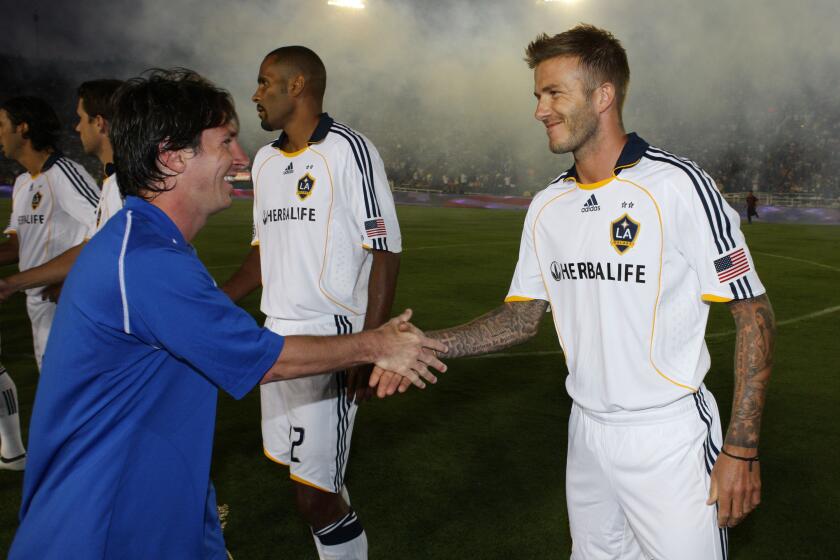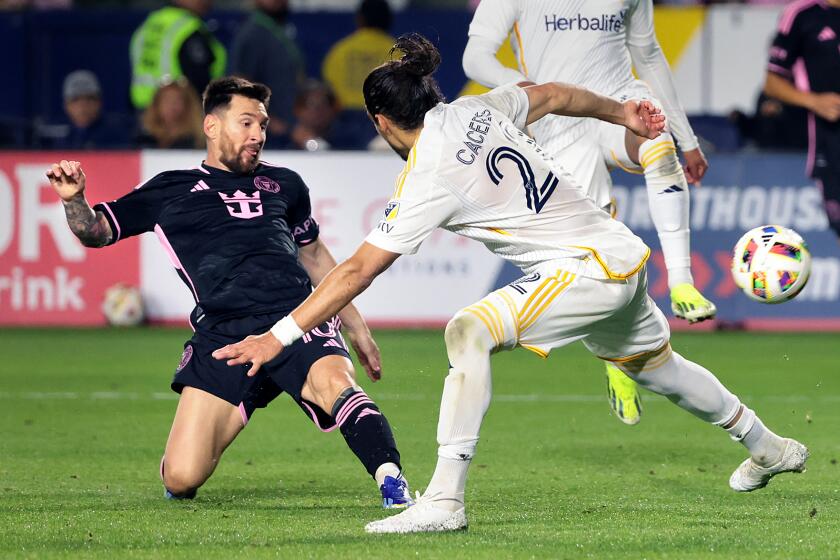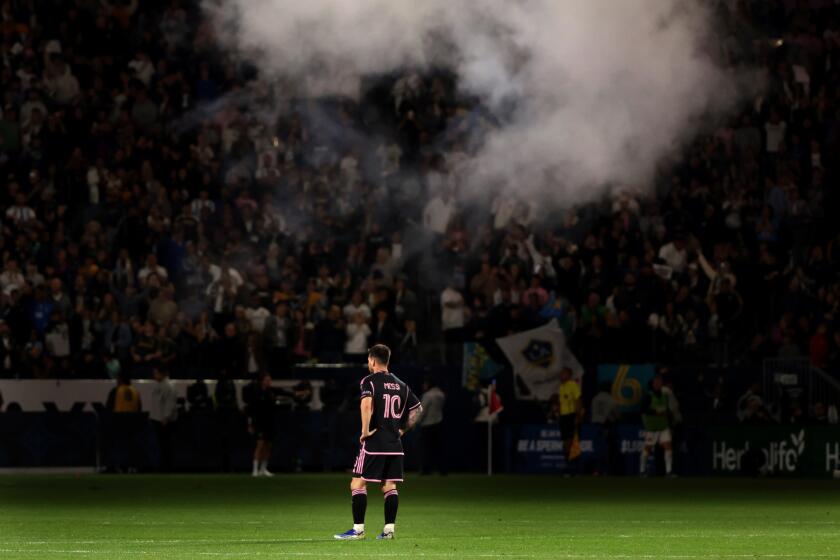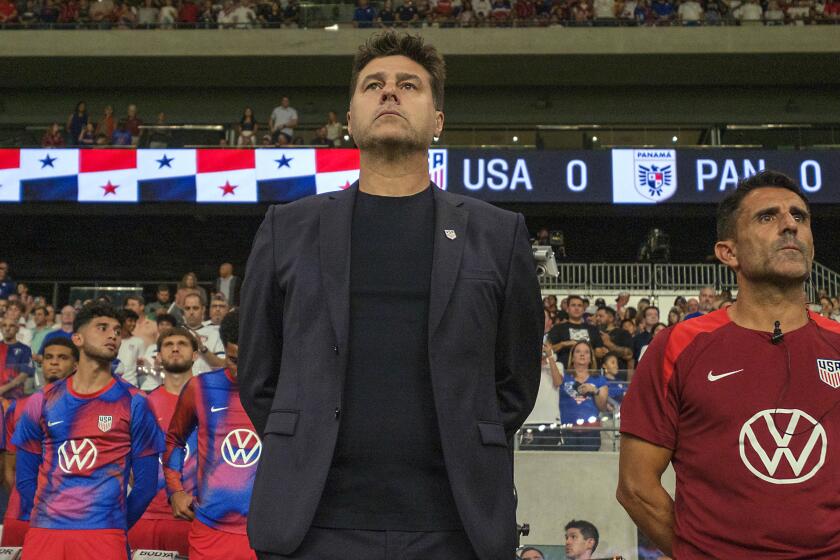Commentary: MLS can’t afford to fumble its Messi moment and must make bold changes now
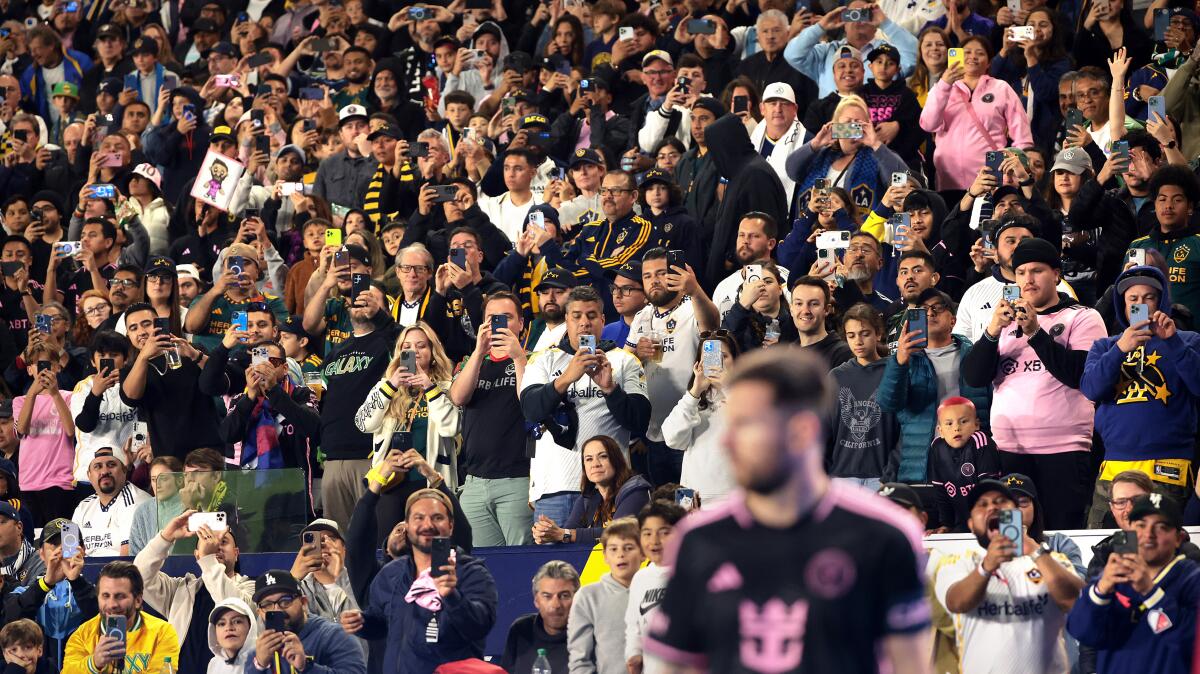
The two most powerful men in MLS were in the building Sunday when Lionel Messi brought Inter Miami’s traveling circus into Dignity Health Sports Park.
Messi was on the field, where he scored the tying goal in a 1-1 draw with the Galaxy. Don Garber, the league’s commissioner and the other half of that powerful pair, watched the game from AEG’s corporate suite.
In his short time in MLS, Messi has pushed the league to new levels of revenue, interest and awareness. Inter Miami sells out wherever it plays, Royal Caribbean is giving the team more than $22 million for the shirts on their backs and the number of subscribers to the streaming service that broadcasts MLS games has more than doubled since Messi’s arrival.
Turns out having the best player in the history of the sport join your league can be a transformational moment.
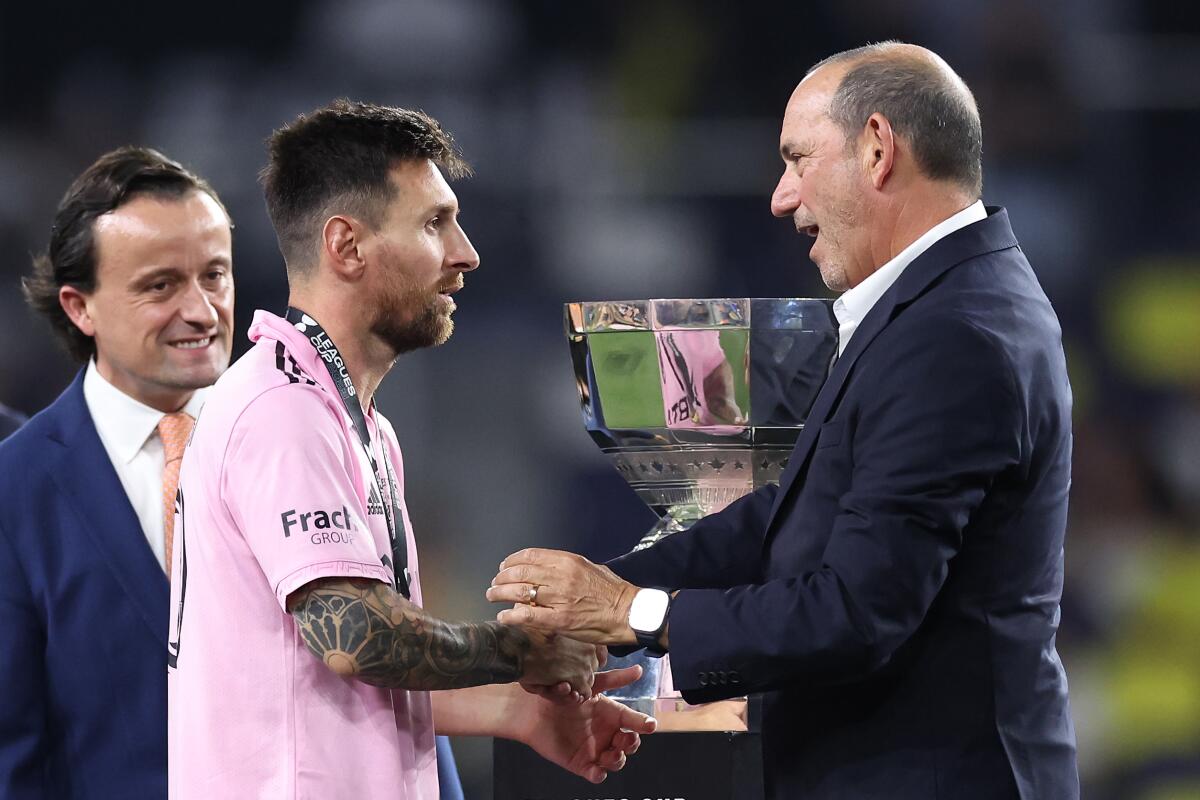
“You’ve got to keep getting top players,” Galaxy coach Greg Vanney said, “because that’s what people want to see.”
Who knew?
Well, everybody actually, because we’ve seen this before. And that’s where Garber comes in.
The season before Michael Jordan entered the NBA in 1984, no team drew as many as 16,000 fans a game. Last season, no NBA team drew fewer than 16,000. With help from Nike, Jordan became a global brand as much as he was a player and the NBA, under then-commissioner David Stern, followed suit. The league expanded from 23 to 30 teams, began playing and televising games overseas and revenue exploded, from $118 million in 1982-83 to $10.58 billion last season.
The NBA says the Brooklyn Nets alone have 53.6 million overseas fans and the league’s TV rights outside the U.S. are twice as valuable as the NFL’s, according to Ampere Analysis.
If David Beckham the player brought MLS attention and respectability, Beckham the owner brought the league Lionel Messi and ... well, everything else.
The NHL can’t match that, but it had its own transformational moment when the Kings acquired Wayne Gretzky from the Edmonton Oilers in 1988. Gretzky already held the league’s single-season records for goals, assists and points when he came to L.A., joining a franchise that had enjoyed just four winning seasons in 21 years.
During the next five seasons, Gretzky took the Kings to division and conference titles and the Stanley Cup finals. But more important, he proved hockey could thrive in the Sun Belt when average attendance at Kings games jumped more than 27% in his first season.
Three years later the league, which hadn’t grown in a dozen years, began a spurt that added five teams in eight years, expanding to nontraditional markets in San José, Tampa, Miami, Anaheim and Nashville.
Today, no professional sports league in North America has more teams than the NHL’s 32. And while that process started under John Ziegler, it grew rapidly when Gary Bettman became commissioner in 1993, with Sun Belt teams winning eight of the last 24 Stanley Cup finals.
In front of 27,642 fans, many wearing Lionel Messi jerseys, the Galaxy settle for a tie in their season opener when Messi scores late for Inter Miami.
Which brings us back to Messi, Garber and MLS. The league concedes it is at an inflection point and with Messi it has a generational opportunity to capture new fans and build enthusiasm. But time is short — Messi’s contract expires in 2025, six months before the World Cup returns to the U.S.
That leaves the commissioner and his league a little more than two years to win over the kinds of fans that packed Dignity Health Sports Park on Sunday, with the crowd of 27,642 breaking stadium records for attendance and gross revenue. Instead, those efforts are being undermined by unnecessary distractions that threaten to undermine the league’s potential for growth.
Less than a week before the MLS season opener, the union that represents the league’s on-field officials overwhelmingly rejected a tentative labor contract from the Professional Referees Organization (PRO), the organization that employs and manages the league’s officials. PRO, with backing from MLS, responded by locking out the referees and using backup officials, many of whom had never worked above the lower levels of U.S. soccer.
The results were predictable: With the world tuning in to watch Messi, what they saw instead were overwhelmed officials who struggled mightily on the big stage. In fact, Messi’s game-tying goal probably wouldn’t have happened had Gabriele Ciampi not given two extremely questionable yellow cards to Galaxy midfielder Mark Delgado, leading to his expulsion and opening the field up for Inter Miami.
Garber and the league need to pressure PRO to resolve the lockout immediately.
Age is quickly catching up with Lionel Messi and other key stars on Inter Miami’s roster. The team struggled to keep up with the young Galaxy Sunday.
The second distraction is one Garber brought on himself by promising to pull MLS teams out of the U.S. Open Cup, the longest-running soccer competition in the country. The tournament has been plagued by low attendance and an even lower level of interest in recent years and many MLS teams had already begun using reserve team players in U.S. Open Cup games.
But saying the quiet part out loud was a huge unforced error on the commissioner’s part, making it appear as if he was turning his back on two things soccer supporters care about: tradition and history. This is a fight the league can’t win and shouldn’t even be waging.
Instead the focus should be on the league’s goals to double its fan base by 2027. The MLS sporting and competition committee opened two days of meetings in South Florida on Monday to discuss ways to make that happen, chief among them significant changes in roster rules competition format, including changes to the salary cap, which has restricted both spending and ambition.
And while that won’t allow teams to bring in the next Messi — like Jordan and Gretzky, there’s only one Messi — it would give them the ability to compete for the next level of talent.
“If there was ever a time to do something big and bold, if there was ever a time to actually let these teams that want to do big bold things, permit them to do [so] through the rules, it is this,” said Alexi Lalas, a former World Cup player and MLS executive and now a soccer analyst for Fox Sports. “It’s constantly being squashed. [MLS] has grown to a point now where it can handle a much more open type of spending.”
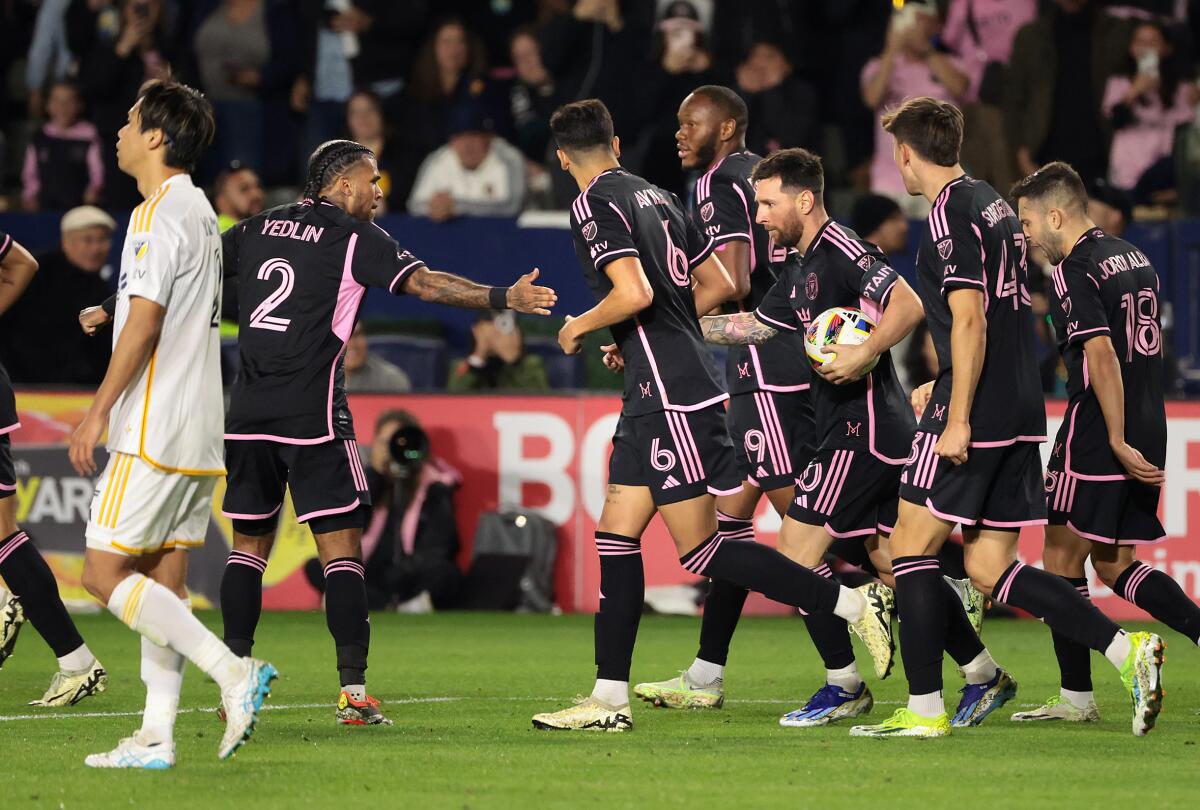
It’s uncertain whether Garber will listen to Lalas or even the fans, who are calling for the same bold changes. But he will listen to Eddy Cue, Apple’s senior vice president of services, who gave the league a 10-year, $2.5-billion media deal last season.
“There’s a level of excitement,” he told reporters last week. “When anybody asks what do I want from anybody, any of the teams, I’m like, sign some more players.”
Garber, however, is preaching caution and urging perspective. While Stern seized on the singular star power of Jordan and Bettman bet on the greatness of the Great One, Garber said Sunday that his league is more than just one player.
“This league has so much momentum, and had it last year before Leo was signed,” he said. “We’ve all learned that it’s never about any one player. But we should all cherish the great experiences when legends come into your league.
“And I think you’ll see many more players like Leo, whether it’s Thierry Henry, whether it’s Zlatan or it’s Riqui Puig. There are great players that look to our league as a league of choice.”
But there are no more players like Messi, meaning there will be no more opportunities like the one Garber and MLS have now. The league can’t afford to let its Jordan moment pass.

